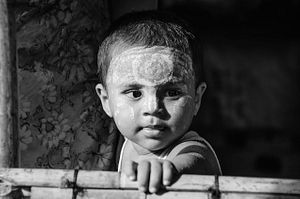Three years ago, Rakhine State – the coastal region where Myanmar meets Bangladesh – was struck by violence that largely targeted Rohingya Muslims. In the wake of the clashes, more than 140,000 Muslims were left homeless and destitute. Most of the displaced came from the state capital, Sittwe, and that city’s erstwhile Muslim residents have been resettled in underserviced, Spartan camps, lacking adequate food and healthcare. They are forcibly separated from the rest of society, echoing Apartheid-era South Africa.
The Rohingyas were the target of intense government persecution long before the violence. Most are stateless under Myanmar’s harsh 1982 citizenship law. Myanmar refuses to refer to them by their chosen name, officially dubbing them “Bengalis” owing to their cultural and linguistic affinities with populations across the border, despite the fact that many can trace their ancestry in the region for generations.
Camp residents are not afforded freedom of movement, making it impossible for them to seek out livelihood opportunities and better conditions elsewhere in Myanmar. The privations of camp life have prompted a mass exodus by sea, with tens of thousands of Rohingyas seeking out safe haven in Muslim-majority Malaysia since 2012. But their passage was facilitated by predatory human traffickers, who held them for ransom or sold them into slavery outright in many cases. The discovery of mass graves at trafficking camps along the Thai-Malaysian border in early May has prompted an intensified crackdown on Southeast Asia’s modern-day slave trade, but the dire conditions at home – and ongoing persecution by the government – continue unabated.










































